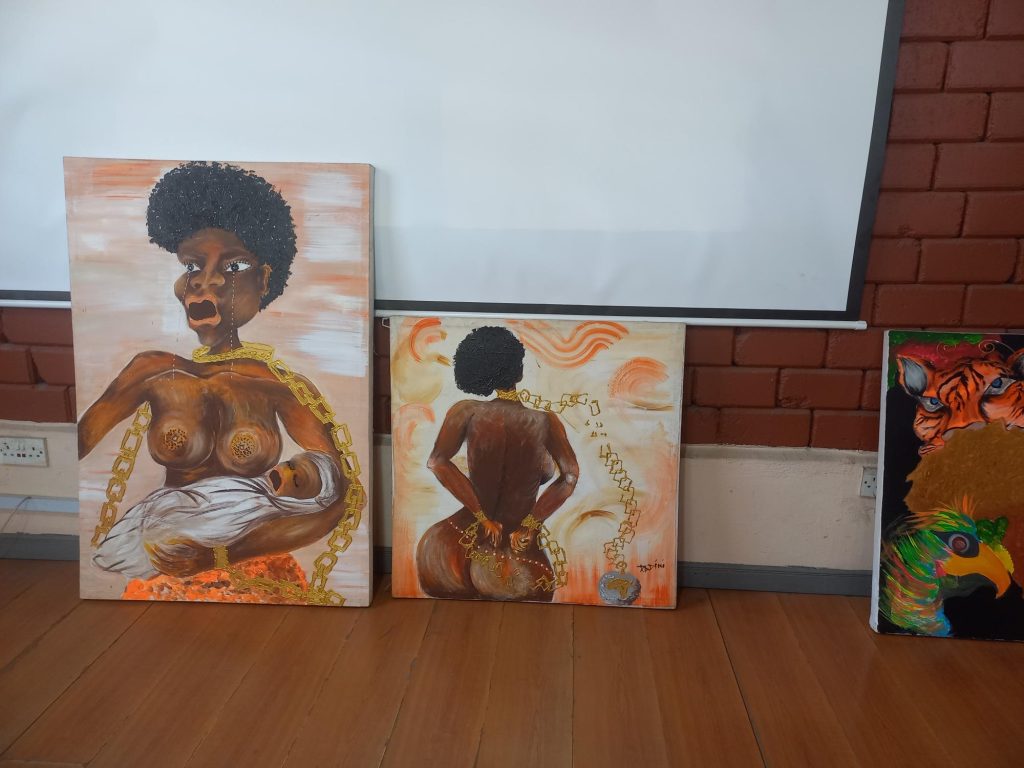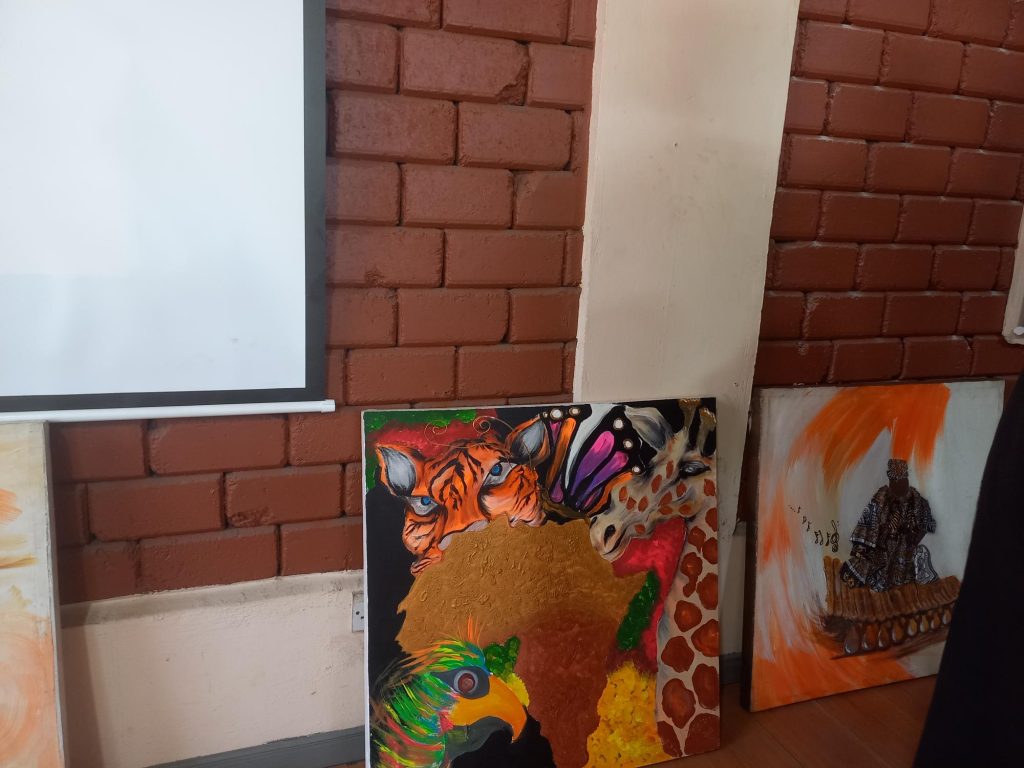By Hafsa Obeng
Accra, June 12, GNA – A Ghanaian female artist, Madam Sharon Dede Padi, has presented some art pieces to the Pan African Heritage Museum (PAHM) to be exhibited, to portray and celebrate African arts, culture, history and ideals.
The artefacts portray the history, heritage and culture of Africa, and tell stories that would help the future generation to know their origin.
Madam Padi, presenting the art pieces, said painting and history had been her passion for a long time because she loved looking back to bring more light into the future.
She said she was inspired to present the specific arts pieces because she envisaged the museum as one that would be able to store and curate history.
“Because pan Africanism talks about our history, and our past, I decided that once I had these historic paintings I will donate a few so that one day when the museum is built, and the paintings are mounted, people would know what our culture is and the next generation will also see what we have gone through and what they could do to improve on their lives.”
She said efforts to enforce and promote the concept of Pan Africanism started as early as 1920 and several institutions have supported the movement of enforcing African unity, saying this encouraged Africans to collaborate to achieve a common goal of unity among Africans, and Africans in the diaspora.
“I am making a contribution through the donation of these art pieces to the museum and hope that everyone who looks at them will discover some knowledge regarding our African culture and history as well as our heritage.”
She said the paintings might be a minor contribution to the promotion of Pan Africanism and African heritage, but they would still count and make a difference, and called on individuals to contribute to the rich tapestry of Pan Africanism started by the forbearers.

Prof Kojo Yankah, Founder, PAHM said the museum was meant to exhibit, portray and celebrate African arts, culture, history and ideals, as well as bring together all great works of Africans and people of African descent.
“We have in the digital museum the history of African, right from the beginning of civilization to contemporary Africa, and we would do the same thing at Winneba junction at the site of the museum.”
He said the presentation formed part of the collection of artefacts that would go into the museum, “and gives the signal to the rest of Africa that we have already started taking artefacts.”
“A few artists from various parts of Africa have been expressing interest and now we are giving the signal that we are ready to take their arts work. We will put the digital versions on our website and preserve them until 2026 when we hope to have completed the physical museums.”
According to Prof. Yankah because the museum is for both Africans and people of African descent, it would have branches operating in almost every country, “and they are all sending in their digital documentary which we are going to be put on our website. It’s a worldwide thing and because history does not teach us much about other African countries, we will fill in that gab through the museum.”
Touching on the choice of location for the museum, the Founder said the location was chosen due to its proximity to Accra, and because the Central Region had a lot of historical places of significance.
“It will also give the area a new look and revive the story in that whole area. The economy and people will benefit, and Ghana would expand its tourism destinations.”
The Founder noted that work had begun on the site with the planting of trees in the Pan African herbal plant garden. “We are also doing some landscaping then after the rains we go into the physical construction.”

He commended Madam Padi for the presentation, saying her gesture was a true demonstration of what “Africans can share together, and urged others to emulate same.”
GNA